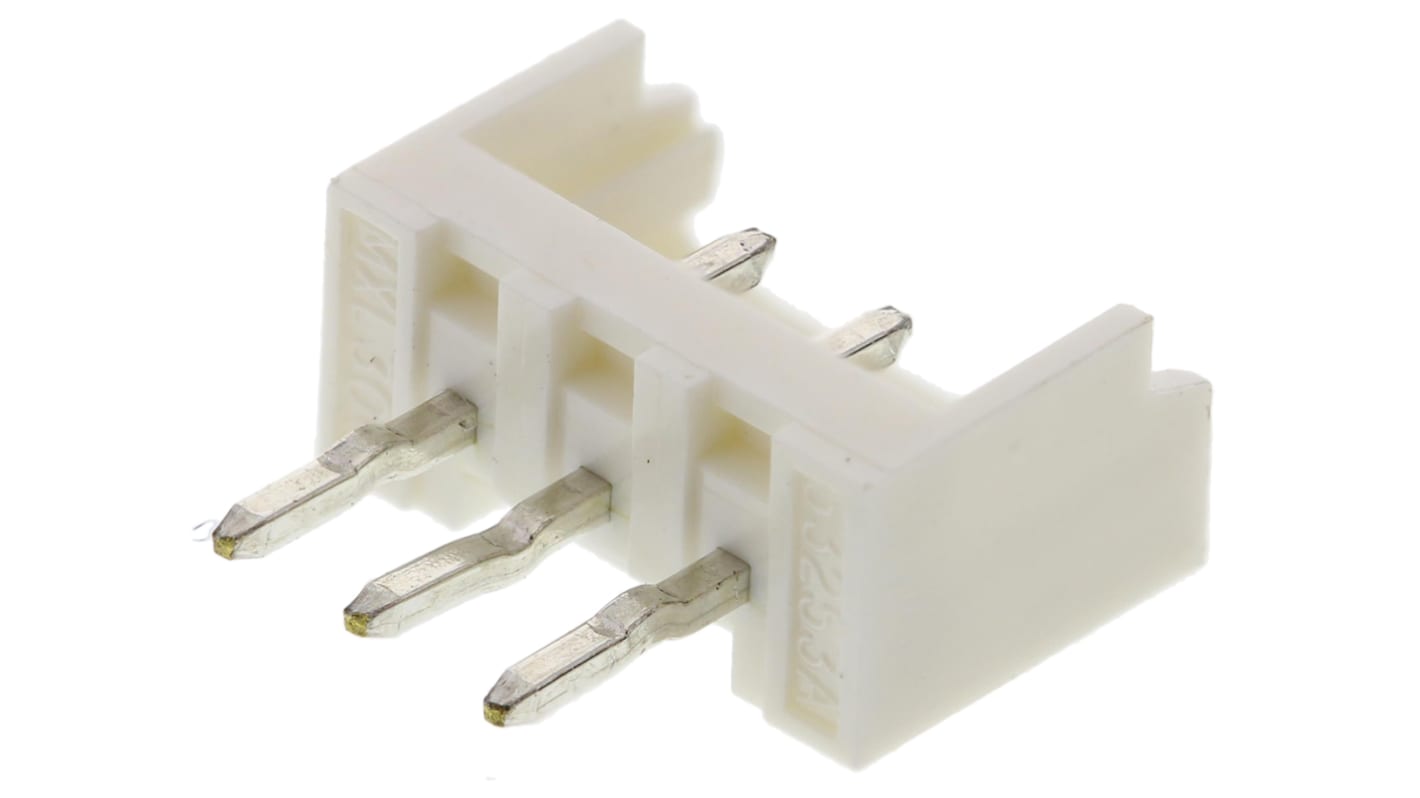Molex Micro-Latch Series Straight Through Hole PCB Header, 3 Contact(s), 2.0mm Pitch, 1 Row(s), Shrouded
- RS Stock No.:
- 688-3283P
- Mfr. Part No.:
- 53253-0370
- Brand:
- Molex

Currently unavailable
Sorry, we don't know when this will be back in stock.
- RS Stock No.:
- 688-3283P
- Mfr. Part No.:
- 53253-0370
- Brand:
- Molex
Specifications
Technical Reference
Legislation and Compliance
Product Details
Find similar products by selecting one or more attributes.
Select all | Attribute | Value |
|---|---|---|
| Brand | Molex | |
| Series | Micro-Latch | |
| Pitch | 2.0mm | |
| Number of Contacts | 3 | |
| Number of Rows | 1 | |
| Body Orientation | Straight | |
| Shrouded/Unshrouded | Shrouded | |
| Mounting Type | Through Hole | |
| Connector System | Wire to Board | |
| Termination Method | Solder | |
| Contact Plating | Tin | |
| Contact Material | Brass | |
| Series Number | 53253 | |
| Current Rating | 2.0A | |
| Voltage Rating | 125.0 V | |
Select all | ||
|---|---|---|
Brand Molex | ||
Series Micro-Latch | ||
Pitch 2.0mm | ||
Number of Contacts 3 | ||
Number of Rows 1 | ||
Body Orientation Straight | ||
Shrouded/Unshrouded Shrouded | ||
Mounting Type Through Hole | ||
Connector System Wire to Board | ||
Termination Method Solder | ||
Contact Plating Tin | ||
Contact Material Brass | ||
Series Number 53253 | ||
Current Rating 2.0A | ||
Voltage Rating 125.0 V | ||
Molex Micro-Latch Series PCB Header, 2mm Pitch, 3 Contacts - 53253-0370
This PCB header features a 2mm pitch configuration. Designed as a vertical connector, it boasts three circuits housed within a shrouded design. The through-hole connector is tailored for wire-to-board applications, ensuring reliable solder termination while facilitating accurate alignment and efficient signal transmission.
Features & Benefits
• Shrouded design maximises protection against accidental disconnections
• Brass contact material enhances electrical conductivity and durability
• Rated for 2A current, supporting various electronic applications
• Compatible with a recommended PCB thickness of 1.60mm
• Vertical orientation allows for efficient space management on PCBs
• Durable construction ensures up to 30 mating cycles for longevity
• Brass contact material enhances electrical conductivity and durability
• Rated for 2A current, supporting various electronic applications
• Compatible with a recommended PCB thickness of 1.60mm
• Vertical orientation allows for efficient space management on PCBs
• Durable construction ensures up to 30 mating cycles for longevity
Applications
• Suitable for connecting signals in automated equipment
• Utilised in electrical control panels for reliable board connections
• Implemented in mechanical devices requiring compact wiring solutions
• Perfect for interfacing various electronic components in devices
• Utilised in electrical control panels for reliable board connections
• Implemented in mechanical devices requiring compact wiring solutions
• Perfect for interfacing various electronic components in devices
What is the importance of using a shrouded design in connectors?
The shrouded design enhances the integrity of connections by preventing misalignment and protecting the contacts from external interference or damage, ensuring stable performance in critical applications.
How does the choice of brass for the contacts impact reliability?
Brass offers superior conductivity compared to other materials, which ensures efficient current flow while maintaining durability under mechanical stress, making it ideal for long-term use.
How does the vertical orientation of the header facilitate installation?
Vertical orientation simplifies insertion into PCBs, allowing for easier access and reducing the risk of incorrect placement, which is particularly beneficial in tight spaces.
What is the significance of a recommended PCB thickness of 1.60mm?
Adhering to the recommended thickness ensures optimal fit and stability, reducing the likelihood of connection failures and enhancing overall circuit reliability in operation.
2.0mm Wire to Board Molex Micro-Latch
This system applies a friction lock mechanism where the noses on receptacle housings slide into the header wall openings. This ensures a durable mating and a protection of the electrical circuitry.
